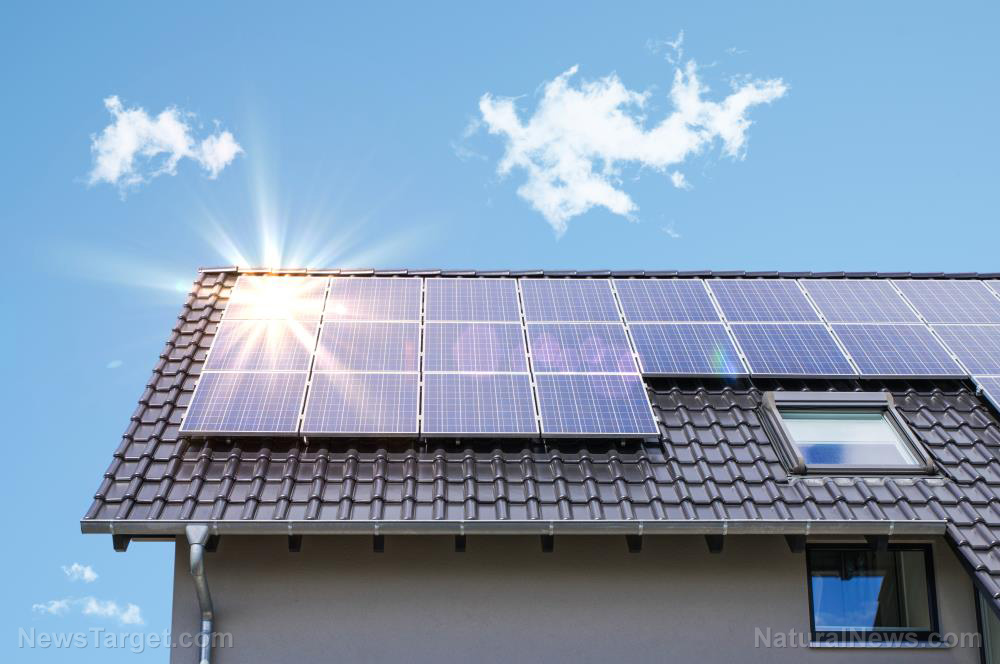Not exactly smart: Study points out issues with smart cities
07/08/2021 / By Ramon Tomey

Many cities have strived to become “smart” by involving 5G and the internet of things (IoT). However, a new study has pointed out a number of issues involving smart cites. Researchers found that issues such as electronic waste generation and cybersecurity threats could arise from cities adopting smart building structures. It also noted the harmful effects of 5G radiation on people.
In a June 10 study published in Buildings, two United Arab Emirates University (UAEU) researchers examined more than 40 studies about smart cities from different sources worldwide. They managed to find five major issues that arise with smart cities: excess data centers, proliferation of undersea cables, accumulation of e-waste, cybersecurity threats and electromagnetic pollution from 5G energy.
The researchers challenged the notion of 5G as energy-saving and reducing CO2 emissions. They noted that 5G can only transmit wireless data for a 10-mile distance, compared to 4G which can transmit data for around 1,000 miles. Because of this shorter distance, more relay towers and antennas are needed to transmit 5G.
They also touched on the proliferation of data centers for smart cities. Data centers house the servers used for cloud computing and IoT. However, the researchers noted: “Unlike other large buildings, these structures require a large cooling demand and powerful HVAC systems to keep the equipment safe.” According to a 2012 paper cited by the researchers, an average data center utilizes only 70 percent of its energy for work – with the remaining amount being converted to carbon dioxide (CO2) and other greenhouse gases being emitted.
In addition, another paper from 2007 cited by the researchers said that data centers emitted about 23 percent of global CO2. This shot up to 69 percent in 2020 – three times that of 2007 levels, they added. (Related: Landmark study highlights health threats of 5G on people + planet.)
Cities going smart impacts humans and the environment
The two UAEU researchers noted how the proliferation of undersea cables could threaten marine life by undermining fishes and the surrounding water. The toxic chemicals which these cables contain – such as arsenic, zinc and mercury – could leach into ocean water and poison fishes and other creatures. Furthermore, electromagnetic fields from the undersea cables could affect different marine species as they are sensitive to either electric of magnetic fields.
“5G and IoT are expected to create exponential growth in the undersea cables as they are developed to handle more data speed and volume. [This] can worsen the already severe environmental issues caused by these cable networks,” they said.
The researchers said that aside from marine life, land-based organisms are also under threat from 5G and IoT. They cited the collapse of bee colonies due to wireless radiation negatively impacting the insects’ navigation system. This rendered the bees unable to return to their hives or find food. In another study, trees situated near cellular base stations were also affected by radiation – with the damage worsening as time passed.
The researchers noted the different health issues related to 5G frequencies such as headaches, insomnia, eye and nerve damage, hormonal imbalances, reproductive issues and tumors. A number of studies by other researchers found that high frequencies can cause significant changes in heart rate, cell DNA and hormone levels. According to a 2015 study the researchers cited, electromagnetic frequencies could also worsen health conditions linked to oxidative stress.
The researchers concluded: “While technological companies advertise the benefits of smart buildings and smart cities, there is an equal need to understand the demerits behind developing these.” They reiterated the importance of scrutinizing the pros and cons of 5G, given that it can “directly affect the individual, biologically and mentally.” The researchers ultimately emphasized that the impact of 5G and IoT on human health, environment and climate change “must be regarded as a top priority” before the technologies are deployed on a global scale. (Related: Major cities are fighting cancer-causing 5G technology.)
Theodora Scarato, executive director of the nonprofit Environmental Health Trust, said the UAEU researchers’ paper “should be a call to action for … city planners and elected leaders worldwide.” She continued: “A cradle to grave analysis of so-called ‘smart’ cities should be a pre-requisite before we leap into 5G. The word ‘smart’ is being used to describe a tsunami of infrastructure and technology that is harming our environment and threatens human health.”
Visit EMF.news to read more about the negative effects of 5G radiation used in smart cities.
Sources include:
Tagged Under: 5g radiation, carbon dioxide, cell towers, cloud computing, data centers, electromagnetic frequencies, electronic waste, environmental damage, greenhouse gases, health hazards, Internet of Things, Smart Cities, undersea cables, wireless transmission
RECENT NEWS & ARTICLES
PowerGrid.News is a fact-based public education website published by Power Grid News Features, LLC.
All content copyright © 2018 by Power Grid News Features, LLC.
Contact Us with Tips or Corrections
All trademarks, registered trademarks and servicemarks mentioned on this site are the property of their respective owners.



















